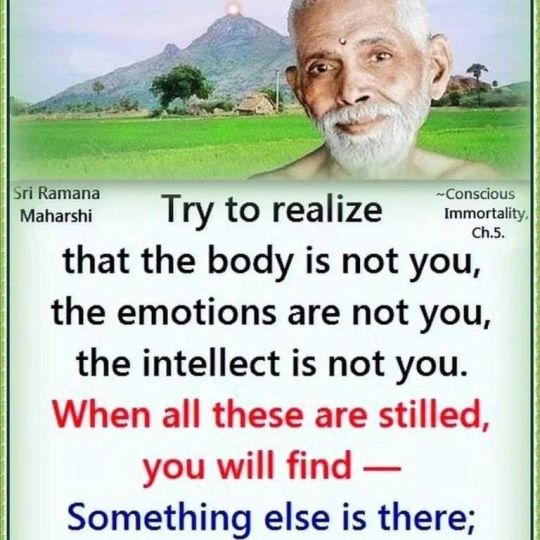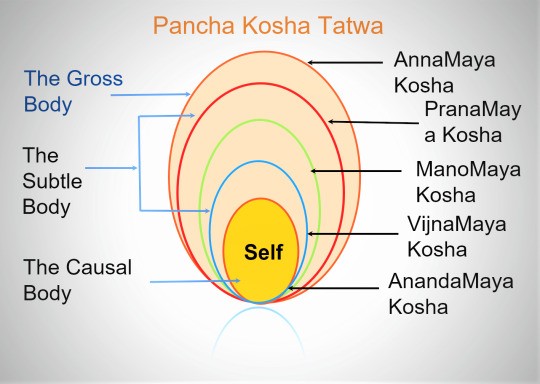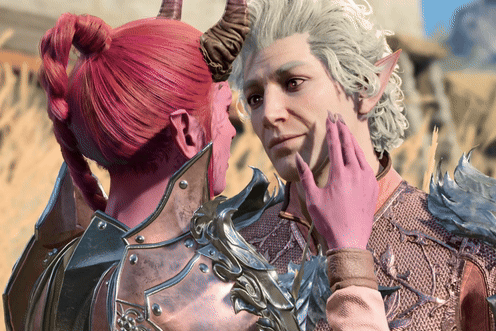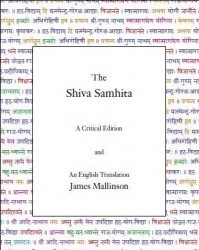#non-dual
Text
"Why do we all have the same illusion ?"
Q : "It can't be a dream we all have the same World ! It must be exterior to us if we all share the same World! How are we all dreaming the same thing ? Dreams are usually private ! "
A : " But that common World is also there in dreams ! Think about it, you're comparing a dream with your waking and you find out the dream is not shared. But in your dream while you're sleeping, when you forgotten it was a dream, you were meeting with people , talking with them etc .
When you're drinking tea with your friend in your dream does your friend says " I can't see the cup you're not dreaming hard enough! " No everybody agrees in the dream that it's like a waking experience!
You can't say sharing a common reality is a sign of waking , something other than a dream, because in dreams , exactly the same thing happens. "
- Swami Sarvapriyananda
Link to the video

199 notes
·
View notes
Text

I am Shakti, as well as Shiva. I am everything male and female, light and dark, flesh and spirit. Perfectly balanced in one single moment lasting forever...
And so are you.
20 notes
·
View notes
Photo

#non-dualism#non-duality#non-dual#nonduality#nondualism#nondual#non duality#non dualism#non dual#advaita vedanta#advaitavedanta#advaita#jnani#jnana yoga#ramana maharshi
20 notes
·
View notes
Text
There is a sense in which we feel alive to something else than this life, this world, this universe.
We try to put words around it, envelope it in meaning, but we're always a little off the mark or it's just out of reach.
Call it anything you want but there is a quality (at least to me) that is indescribable.
If there is a way to think of it (see the Heart Sutra), it's this:
emptiness is form;
form is emptiness.
Try then to imagine the stories in your head, the worlds you live and the cultural narrative that dominates all our lives.
Impossible; ineluctable; inexhaustible, perhaps.
Whatever it is, it's not something to be grasped or coveted.
It just is.
2 notes
·
View notes
Text
Rice Eyes Enlightenment in Dogens Kitchen by Tai Sheridan


Rice Eyes Enlightenment in Dogens Kitchen
Rice Eyes Enlightenment in Dogens Kitchen by Tai Sheridan is a poetic presentation of Dogen's essay Tenzo Kyokun, Instructions to the Cook, by Zen Priest and Poet Tai Sheridan. 'Rice Eyes' is a metaphor for the non-dual world, the essential Buddhist experience of oneness. Dogen uses the role of Tenzo, or head cook, to demonstrate how to live, work, and experience a spiritual life that brings benefit to everyone.
From the book:
Dogen lived from 1200 to 1253. He was the founder of the Soto lineage of Zen in Japan, a school of Zen now firmly rooted in America and the West. His seminal essay, Instructions to the Cook (Tenzo Kyokun), is an important treatise on living an aware and joyful life while engaged in daily activities. 'Rice Eyes' is a metaphor for the non-dual world, the essential Buddhist experience of oneness. Dogen uses the role of Tenzo, or head cook, to demonstrate how to live, work, and experience a joyful spiritual life that brings benefit to everyone. I have called the head cook the 'Chef de Cuisine' so that the poem addresses everyone, not just monastic Zen chefs. I have transformed Dogen's essay from prose into poetry, and have created subdivisions by topic that clarify his writing. I have also replaced his thirteenth century idioms with contemporary language and images to make his ideas more easily understood.
Download it here:

Rice Eyes Enlightenment in Dogens Kitchen
What is the book Tenzo Kyokun about?
"Tenzo Kyokun," also known as "Instructions for the Cook," is a classic Zen Buddhist text written by the 13th-century Japanese Zen master Eihei Dogen, the founder of the Soto school of Zen Buddhism. The text is not just a set of instructions for the monastery cook (tenzo), but it is also a profound teaching on how to live a mindful and enlightened life.
One of the most striking aspects of "Tenzo Kyokun" is its emphasis on the ordinary task of cooking as a path to spiritual practice and awakening. Dogen teaches that every aspect of the preparation and serving of meals is a form of meditation and a way to practice mindfulness and compassion. He urges the cook to handle all ingredients with respect, as if they were precious, and to cook with a pure heart and a clear mind, free of distractions and selfish desires.
The interconnection of all things
The text is beautifully written, and its teachings are presented in a straightforward and practical manner that is accessible to readers of all backgrounds. Dogen's insights into the nature of work, responsibility, and the interconnection of all things are profound and timeless. He shows that enlightenment can be found in the most mundane activities and that every action, no matter how small, has the potential to be a means of spiritual growth and self-realization.
"Tenzo Kyokun" is not only a guide for Zen practitioners but also a source of inspiration for anyone seeking to live a more mindful and meaningful life. It teaches the importance of being present in every moment and finding joy and fulfillment in serving others. It is a reminder that the path to enlightenment is not found in seeking extraordinary experiences but in fully engaging with the ordinary tasks and challenges of everyday life.
In conclusion, "Tenzo Kyokun" is a profound and timeless work that offers valuable wisdom for anyone interested in Zen Buddhism or the art of mindful living. Its teachings are as relevant today as they were in the 13th century, making it a must-read for those on a spiritual journey.
Read the full article
0 notes
Text
Pancha Kosha ~THE WISDOM OF THE FIVE SHEATHS
Who Am I?
The wisdom of the five sheaths (Pancha Kosha) in Advaita Vedanta demonstrates the illusory nature of individuality. We become aware of the fundamental unity of the Atman, the genuine self, when we strip away the layers of our physical, vital, mental, and intellectual coverings. The deep realisation of non-duality that results from this insight allows the individual self to transcend…

View On WordPress
#000000#000080#0000ff#008000#333399#674970#800080#Advaita Vedanta#aware#endless#ever free#Five Sheaths#non-dual#Our true nature is beginning less#pure#Supreme Bliss.#Supreme Consciousness#the knower of Brahman attains the Supreme.#unbounded#Who AM I
0 notes
Video
youtube
Here is a demonstration of the real experience of Oneness, explaining how the shift of perception happens from duality to one infinite bliss and teach you how it can happen for you. May it awaken your perception into the One Infinite Bliss <3
#youtube#oneness#nonduality#non-duality#nondual#non-dual#sahaja#samadhi#nirvana#spiritual enlightenment
0 notes
Text

Non dual
961 notes
·
View notes
Text
You'll Never Realize That.🖼️
(quotes by Dudaji ebook on Kindle) - thread on twitter


''There's an assumption that you can follow some kind of path, that you can implement some practice, that you can learn some teaching. But there's no you - there's only Oneness. So, ask yourself: "Who is following what? Who will follow what?" Sometimes there is the pretence of "me", there is a seeking, there is a longing. No amount of meditation or effort or practice will ever destroy the illusion of "me", because the whole effort of trying to destroy it continues to reinforce this "me". So, there's no path, no practice, no teaching. There's no method, no technique, no formula.
There are no oughts, no shoulds, no shouldn'ts. There is no goal, no direction, no plan, no from here to there, no expectation, no intention, no "in order to", no calculation. It just simply is what-is or "what happens".
If there is a message, it points to this Natural Reality, a Reality that is boundless and beyond description. But if you search it, you will not find it. The more you seek, the more desperate your search become.
There is no answer to seeking and to the seeker, because there is no seeker. Every seeking is illusive, that there is nothing to be sought and nothing to be found.
What is pointed here is the fact that this whole movie that includes the seeker, the seeking and what is sought is illusory. There is no point in time and space to reach. There is no going beyond, no border to cross, no ultimate viewpoint to be acquired.
There is no enlightenment state as well as there is no unenlightened state. All states are imagined. You may be seeking for answers. You see yourself as someone searching for answers: a person, male, female, young, old, tall, short etc.
But you cannot find any answer, neither in this book nor anywhere else because there is no one seeking, there is no one alive. Nobody has ever born. There is not an "I" and there is not a "you". This is an appearance, not real at all, which therefore is like a dream.
In this oniric experience you are separate from all the things that surround you. But what also seems to be part of this dream is a feeling of unfulfilment.
The contents of your aware presence of consciousness are momentary dreams, unreal, without any independent existence outside of the mind that is conceiving and perceiving them.
In those dreams you see everything as a separate object, then there is a "you" as you believe yourself to be. Since there is no separate self, who is to affect change? When you take life on its own way, everything will be discovered to be the ground of Unconditional Love.
The World you perceive is entirely private, a dream. The world you can perceive is a very small world. It is you who have invented a totality to contain you as a part.''
305 notes
·
View notes
Text










kissing in a wheat field pt. 2
#pro dual wielder cymbeline#had to make a gif set with her other bf#bg3#non sims#tav: cymbeline#bg3 gif#bg3 astarion#bg3 tav#astarion#astarion x tav#gif warning#gif tw#baldurs gate 3#baldurs gate astarion
112 notes
·
View notes
Text
When you fight, you invite a fight. But when you do not resist, you meet no resistance. When you refuse to play the game, you are out of it.
-Nisargadatta Maharaj
#nisargadatta#quote#peace#calm#stillness#life#wisdom#inner peace#love#happiness#spiritual#awareness#non dual#nondualism#pyschology#yogi
314 notes
·
View notes
Text
don't call it a comeback, i been here for years
(flashing cw)
#ace attorney#phoenix wright#miles edgeworth#wrightworth#i mean i GUESS it could technically be nrmts so i'll go ahead and tag that anyway#dual destinies#ash makes things#video#aa anime#ash posts#flashing cw#don't question why there's 1 non-dd clip in there#there's really not a lot of him in the dd cutscenes so i had to go find something similar to use lol#and it actually ended up working out nicely with the next clip!#also maybe don't question the audio suddenly stopping at the end#i would have let it go until the chorus but there's not much footage of him in dd and i wanted to keep it primarily related to this game so#anyway uhhh i had this idea that i couldn't get out of my head so here it is#UGH i always forget the watermark bc i'm so excited to share it as soon as i'm done editing it#okay it's been added now
480 notes
·
View notes
Text

STOP THINKING!!!
BE HERE!!
NOW!!!!
#be here now#now#present#no-thought#non-dual#inbetween#around#before#after#thought#zen#enlightenment
22 notes
·
View notes
Video
youtube
No longer human || Nonduality and Enlightenment Simplified
#youtube#nonduality#non duality#non-duality#advaita#nondualism#non dualism#non-dualism#advaita vedanta#vedanta#nondual#non dual#non-dual#advaitavedanta#enlightenment#spiritual awakening#spiritualawakening#self realization#self-realization
0 notes
Photo

(via Are we all seekers?)
1 note
·
View note
Text
The Shiva Samhita - A Critical Edition


The Shiva Samhita
The Shiva Samhita - A Critical Edition is a translation of the ancient teachings on tantra known as Shiva Samhita. The sanskrit title means "The Collection of Verses of Shiva" and the book is considered the most important root text of Hatha Yoga. It starts out by outlining various methods of liberation and philosophical ideas and it goes into details on the non-dual Vedantic philosophy.
Download the complete English translation of The Shiva Samhita here:

The Shiva Samhita
What is the Shiva Samhita?
The Shiva Samhita is a classical text on yoga and tantra. It is considered one of the three most important texts of Hatha yoga, the others being the Hatha Yoga Pradipika and the Gheranda Samhita. The exact date of its composition is unknown, but it is generally placed between the 17th and 18th centuries.
Here are some key aspects of the Shiva Samhita:
- Content and Structure: The text is presented as a conversation between Lord Shiva and his consort, Parvati. It consists of five chapters, covering various aspects of yoga philosophy and practice.
- Yoga Techniques: The Shiva Samhita describes various techniques of yoga, including postures (asanas), breath control (pranayama), mudras, and meditation. It also delves into the subtle anatomy of the body, discussing chakras (energy centers), nadis (energy channels), and Kundalini energy.
- Philosophical Teachings: The text provides insights into the nature of the self and the universe, integrating concepts from various Indian philosophical traditions. It emphasizes the importance of self-realization and the unity of individual consciousness with the universal consciousness.
- Influence: The Shiva Samhita has been influential in the development of Hatha yoga. It has been a reference for many modern yoga practitioners and teachers, offering a blend of practical guidance and philosophical understanding.
- Translations and Commentary: The text has been translated into several languages and has been the subject of various commentaries, making it accessible to a global audience interested in yoga and spirituality.
The Shiva Samhita is valued not only for its practical guidance on yoga but also for its comprehensive approach to understanding the mind, body, and spirit in the pursuit of enlightenment.
Read the full article
1 note
·
View note